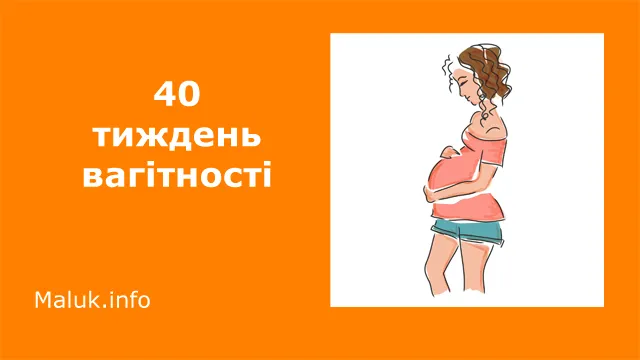Pregnancy calendar: 40th week of pregnancy
Pregnancy calendar by week. An experienced doctor tells how a child develops in the womb and what changes occur in the pregnant woman’s body. All the most important things about the 40th week of pregnancy
Changes in your body:
During the visit to the obstetrician-gynecologist, standard procedures will be carried out: the study of blood pressure, pulse, measurement of body weight, body temperature, height of the uterine fundus. An intravaginal examination is important, during which the doctor will determine the degree of maturity of the cervix, as well as the width of the opening in centimeters – these are signs of readiness for childbirth. If the cervix is not ready, it can complicate the course of childbirth.
When the procedure to stimulate labor (birth) is carried out:
- When there is a risk to the health of the child or mother.
- At 41-42 weeks of pregnancy.
- Rupture of fruit shells and discharge of water.
- High blood pressure or the appearance of protein in the urine during a general urinalysis. The threat of preeclampsia.
- Signs of aging of the placenta on ultrasound examination.
- Signs of fetal hypoxia (insufficient supply of oxygen to the baby’s body).
To facilitate the course of childbirth, I advise you to learn to breathe properly. You can read about how to breathe correctly during childbirth at this link .
How does the baby grow?
No matter how cool it is inside the mother’s body, nothing lasts forever, and pregnancy must end with childbirth. Forty weeks is the optimal period for the development of a child in the womb. Everything that should grow and develop before going out into the world has already grown and developed. And the size and weight of the baby still allows it to pass through the birth canal without excessive harm to the health of the baby and the mother.
The only organ that is still developing is the lungs. After birth, the child must take the first breath, during which the alveoli (lung sacs) must expand, where gas exchange will take place: oxygen will enter the child’s body from the air, and carbon dioxide will also be expelled. In order for the lung sacs to expand, the child’s body had to synthesize a surfactant (surface-active substance) that helps in this. This is precisely why premature babies can have breathing problems due to the immaturity of the lung tissue and insufficient surfactant.
During the first breath, the child’s blood circulation changes: blood begins to flow through the pulmonary arteries and veins, and the oval window in the heart septum closes. The child adjusts to an independent existence, ceases to be dependent on the umbilical cord, which provided the baby with everything necessary during pregnancy.
If you look closely at the child during the ultrasound examination, you can notice that the bones of the skull are not yet completely connected, because the baby still needs to push through the birth canal to the outside. Therefore, the shape of the baby’s head will be slightly elongated immediately after delivery, but soon everything will be corrected.
So, I think you are all set! The suitcase is in a prominent place. The doctor’s phone is magnetically attached to the refrigerator. So breathe, walk, enjoy life!
I wish you and your baby good health! We will meet again. To be continued…
Автор: Ольга Летнянчик, лікар
Read also:
– Pregnancy calendar: from 1 to 40 weeks

